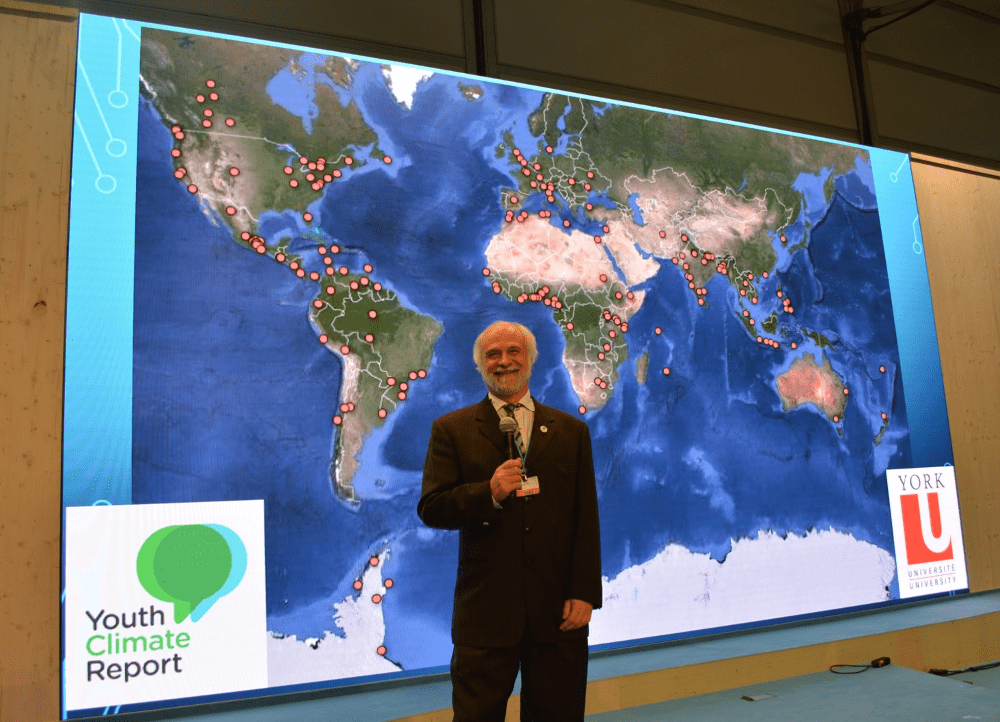Abdeali Saherwala | Staff Writer
Featured image: The Youth Climate Report at COP23 takes steps forward in the research of climate change. | Courtesy of Mark Terry
The 23rd Conference of the Parties (COP23) to the United Nations Framework Convention on Climate Change (UNFCCC) in Bonn, Germany showcased a new initiative created by Mark Terry, a Canadian filmmaker and Humanities PhD candidate at York. His Youth Climate Report is a new initiative that highlights climate research performed by the global youth.
The Report is a database of interviews, articles, and videos researched and created by youth across the globe. The project is focused primarily on the collection of interviews from climate change-focused scientists or researchers in order to document the effects of climate change on a local to global level.
At the COP23, nearly 300 videos on global climate research were presented. These videos were a platform for young people to contribute to high-level policy meetings relating to the mitigation of and adaptation to climate change.
“This project is a multilinear and interactive database documentary project presented on the Geographic Information System (GIS) map. I developed it in response to the UN’s need for a more comprehensive resource of video reports of climate change resource around the world,” says Terry.
The gap between the comprehension of scientific data and policy making was bridged through the medium of film, because visible evidence of climate change can be shown to policy makers.
“As a result, they wanted to see similar visible evidence from the rest of the world,” he continues.
This led Terry to create The Youth Climate Report, which aims to recruit young people “to act as reporters that would provide the volume and diversity of global content the UN wanted.”
Further, “The Youth Climate Report project was officially adopted by the UNFCCC as a partner program under its Article 6 mandate for education and outreach, making it the first university research project to be officially adopted by the UN as a data delivery system,” he adds.
The videos related to issues of climate, gender equality, socio-economic effects of climate change, revolutionary mitigation or adaptation techniques utilized by different cities, and the environmental tragedies committed by human activity.
Each of these videos is tracked by the GIS to inform viewers where these videos were created, who created them, and the effects of climate change on that exact geographical location.
Let Mangroves Recover by Adarsh Prathap from India, and Turning Green by Younes Lamsaoui from Morocco are the two winners who were selected from The Youth Climate Report.
“My video was about the city of Marrakech, its beauty, its climate challenges and climate-friendly projects. Tourism is the first economical activity in Marrakech, so I wanted to present the benefits of ecotourism as an economical and environmentally friendly activity.
“My video also shows how I’m working with my students to teach them what climate change is about, how they can be a part of the solution, and the actions taken by our ‘climate ambassadors club,’ to raise public awareness on the subject,” said Lamsaoui.
The recruitment of youth from around the world has made “one thing stands out: young people are grateful to have a means by which they can contribute solutions. They always ask: ‘What can I do?’ This project answers that question,” adds Terry.
With the conclusion of the COP23, The Youth Climate Report allowed young people to contribute to high-level policy making in hopes of making a difference on an international scale.


